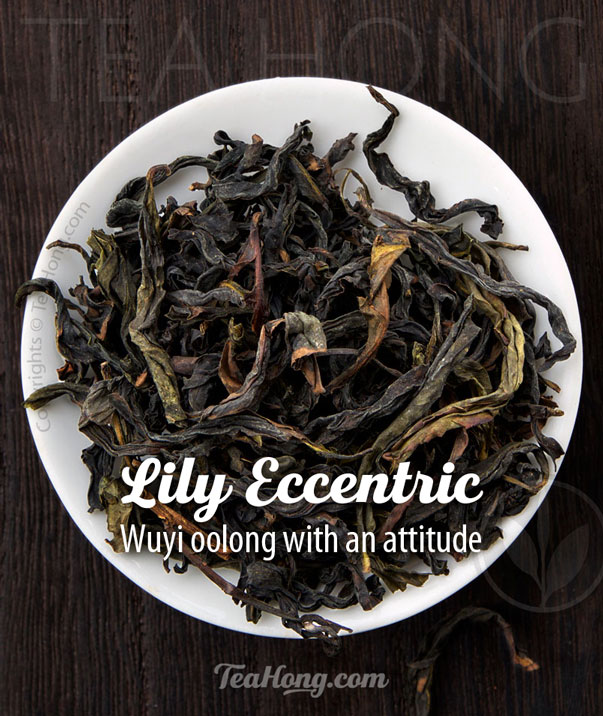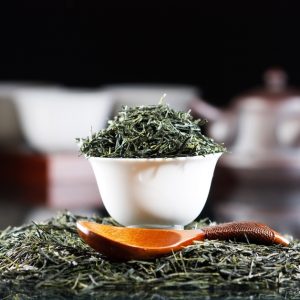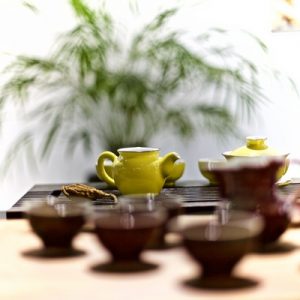Home › Dialogues › Books, Magazines, Info Sites… › Chinese Pinyin romanization
Tagged: pinyin, romanisation
- This topic has 2 replies, 2 voices, and was last updated 8 years, 12 months ago by
pancakes.
-
AuthorPosts
-
-
2015.02.15 at 11:29 pm #12627
pancakes
ParticipantI suppose this isn’t directly related to tea, but since we all use some Chinese names and terms, I thought it would be useful to post a bit about Pinyin romanization details…
Hyphens: The hyphen “-” is used in Wade-Giles, but generally I don’t think it is standard in Pinyin. For example, Zhong-guo would be incorrect, but Zhongguo is fine. Unless there is some special reason, I think hyphens are not really necessary in Pinyin.
Spaces: It isn’t always clear when spaces should be used and when they should not be. It seems, however, that elements of a single word should be together. For example, Englishman should be Yingguoren, not Ying Guo Ren.
Apostrophes: The apostrophe should just be used when there is ambiguity. For example, in Pinyin, pingan could represent either pin + gan, or ping + an. If we are representing ping + an, then we should use an apostrophe to disambiguate it like so: ping’an. Another example is jingang, which could be jin + gang, or jing + ang. If we were representing jin + gang, we would write it as jin’gang.
For example, Luan Guapian could be either 1 syllable luan, or two syllables lu + an. Since the correct one is lu + an, we would use Lu’an. Guapian is unambiguous, so it can stay as it is. The whole thing would be “Lu’an Guapian.”
Often mainland Chinese did not learn these details, because they only used Pinyin a little bit when they were young children, before learning the Chinese characters (Hanzi).
-
2015.03.17 at 11:57 am #12886
 Tea GuardianKeymaster
Tea GuardianKeymasterI am sorry I have missed out on this very interesting topic. I agree with what you said and that actually is the only standard to follow in the long term for a unified understanding of the terms that are pinyin romanised.
However, when we — me in particular — write the articles, there are other serious concerns as well. There are terms with long established usage habit before the existence of Tea Guardian and we do need to take care of how people who are used to them and intend to strike a balance. There is also the concern of how their usage affects the searchability of a term used to refer to the object.
Pu’er is a great example of that. To this day, the majority of the market still refer to it as pu-erh. Some as puer. Few as the proper presentation pu’er. To search engines, even that apostrophe makes a big difference. In the beginning I wrote “pu’er” and after 3 months of the publishing of the articles, they appeared in the 10th or 15th page in Google search. I switched it to “puer” and it came up to the 3rd page.
Yet to the majority of the readers, including Chinese who read English, puer is an ambiguous term to pronounce. So sometimes we have to present it as pu-er. Only sometimes, as a way to define the term. At this moment, you’ll probably see all the terms appearing in this site. The strategy is to expose the small percentage of the world population who chanced to be our readers to familiarise with the existence of these terms, including the proper presentation. This way, hopefully in the near future, we can regain the standard form.
In the English reading world where even some British would feel alienated with the “z” in “romanization” and some Americans would the “s” in the same word, pinyin terms are a hard sell. I still speak to tea people who say Dragon Well and shun Longjing, Peking and not Beijing. Once a trader I was negotiating a transaction with said he could not handle all the mumble jumbo of these foreign words and said he just gave up reading the pricelist.
It is a world of extreme polarity. There are open minded people and well informed of otherness like yourself, there are those who have lived in relative monolingual environment and are quite isolated from the rest of the world.
To me, it is more important to spread the understanding of tea for all its nature. With it, hopefully some lights in what is true, righteous and beautiful.
I am so happy that amongst my old readers there is one who is knowledgeable enough to point out the chaos in our pinyin presentations and care enough to write about it in the forum. However, please bear with our indulgence in attempting to make this site a bit more popular first before gradually giving order to this very diverse way of romanisation.
Much grateful for this opportunity to express on this. Please continue to let me know what you really think.
-
2015.05.03 at 7:47 pm #13187
pancakes
ParticipantVery late reply on my part, but I just want to say that your reasoning is clear. After all, websites have to reach people. 🙂
-
-
AuthorPosts
- You must be logged in to reply to this topic.










